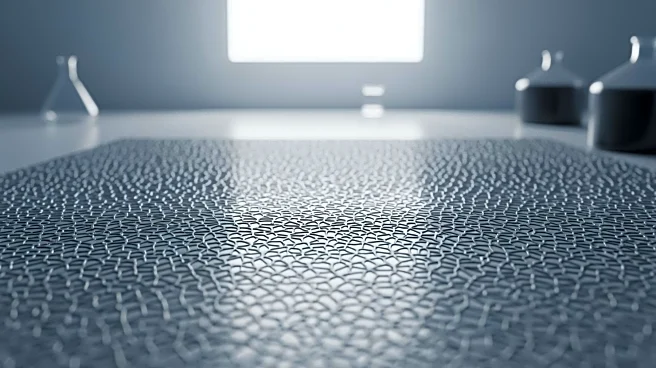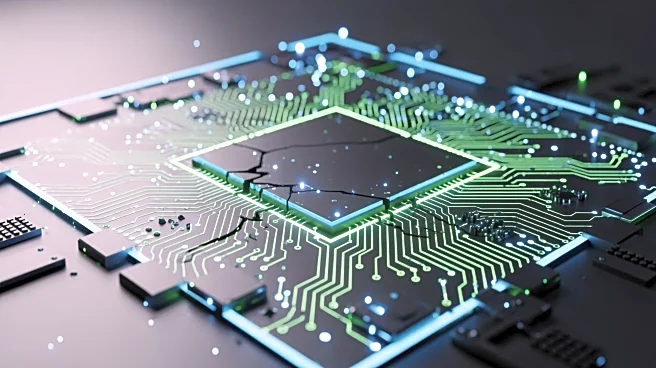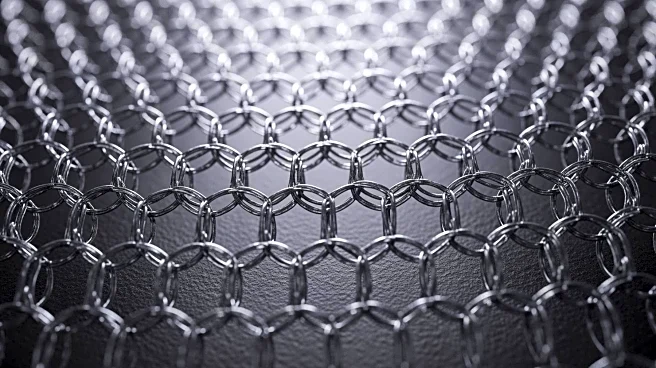What's Happening?
A new method for direct and residue-free patterning of sub-5 µm chemical vapor deposition (CVD) monolayer graphene has been developed, significantly enhancing conductivity and pattern fidelity. This advancement
involves comprehensive molecular dynamics simulations to investigate the interfacial bonding characteristics and electron transport properties of graphene nanoribbons. The study demonstrated that incorporating C-O bonds in graphene can modulate electron transport pathways, offering a novel approach to engineering graphene's electronic properties.
Why It's Important?
This development in graphene patterning could have significant implications for the electronics industry, particularly in the fabrication of high-performance electronic devices. Enhanced conductivity and pattern fidelity in graphene can lead to more efficient and reliable electronic components, potentially reducing costs and improving device performance. The ability to precisely control graphene's electronic properties opens up new possibilities for its application in various fields, including flexible electronics, sensors, and energy storage devices.
Beyond the Headlines
The introduction of C-O bonds in graphene to modulate electron transport pathways represents a strategic approach to material engineering. This method could pave the way for the development of customized electronic materials with tailored properties, addressing specific industry needs. The findings also highlight the potential for graphene to play a pivotal role in the next generation of electronic devices, contributing to advancements in technology and innovation.











